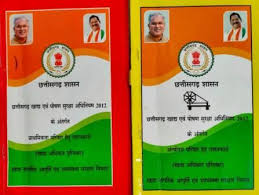Transfer Pricing India
Transfer pricing is an accounting practice that represents the price that one division in a company charges another division for goods and services provided. Transfer pricing allows for the establishment of prices for the goods and services exchanged between subsidiaries, affiliates, or commonly controlled companies that are part of the same larger enterprise. Transfer pricing can lead to tax savings for corporations, though tax authorities may contest their claims. How Transfer Pricing Works Transfer pricing is an accounting and taxation practice that allows for pricing transactions internally within businesses and between subsidiaries that operate under common control or ownership. The transfer pricing practice extends to cross-border transactions as well as domestic ones. A transfer price is used to determine the cost to charge another division, subsidiary, or holding company for services rendered. Typically, transfer prices are reflective of the going market price for that good or service. Transfer pricing can also be applied to intellectual property such as research, patents, and royalties. Section 92 of the Income Tax Act, 1961 Section 92 of the Income Tax Act, 1961 – Computation of income from international transactions having regard to arm’s length price. This section states that any international or specified domestic transaction between associated enterprises which has been mutually agreed and undertaken for the purpose of allocation or apportionment of any cost or expense incurred or to be incurred for a benefit, service or facility undertaken or to be undertaken by one or more of the enterprises, then the cost or expense allocated, must be contributed having regard to the arm’s length price of such benefit, service or facility. Section 92A of the Income Tax Act, 1961 Section 92A of the Income Tax Act, 1961 – Meaning of Associated Enterprises For the purpose of Sections 92, 2B, 92C, 92D, 92E, and 92F the term associated enterprises in relation to another enterprise shall mean, an enterprise- Which participates either directly or indirectly or through one or more intermediaries in the control or management or capital of the other enterprise. In respect of one or more persons that participate either directly or indirectly or through one or more intermediaries in the control or management or capital are the same persons that participate either directly or indirectly or through one or more intermediaries in the control or management or capital of the other enterprise. For the purpose of this section, two enterprises will be deemed to be associated enterprises if any time during the previous year at any time- One enterprise holds directly or indirectly, shareholding carrying not less than 26% of the voting power in another enterprise. Any individual or an enterprise holds directly or indirectly not less than 26% of the voting power in each of such enterprises. Any loan advanced from one enterprise to the other company constitutes not less than 51% of the book value of the total assets of the other enterprise. The guarantees of one enterprise is not less than 10% of the overall borrowings of the other enterprise. More than half of the board of directors or the governing board, or the executive members or directors are appointed by the other enterprise. One enterprise has a dependency in terms of know-how, patents, trademarks, rights or any other business or commercial rights or any data, documentation, drawing or specification relating to any such patent, invention, model or design for manufacturing or processing of goods, and the other enterprise holds the rights to such patents. 90% or more of the raw materials or consumables are supplied by the other enterprise or by persons specified by the other enterprise, and the prices and other conditions relating to supply are influenced by such other enterprises. The goods or articles required by one enterprise are supplied by another enterprise, and the prices and other several conditions relating to supply are influenced by such other enterprises. Where one enterprise is controlled by an individual and the other enterprise is also in control of the same individual or his relative jointly. Where one enterprise is controlled by an undivided Hindu family, the other enterprise is controlled by a member of such Hindu undivided family or by a relative of a member of such Hindu undivided family or jointly by such member and his relative. Where one enterprise is a firm, association of persons or body of individuals, the other enterprise holds not less than 10% interest in such a firm, an association of persons or body of individuals. There exists between the two enterprises, any relationship of mutual interest, as may be prescribed. Section 92B of the Income Tax Act, 1961 Section 92B of the Income Tax Act, 1961 – Meaning of international transaction This section defines international transaction(s) for the purpose of this Section and the Section(s) 92, 92C, 92D and 92E as a transaction between two or more associated enterprises, wherein either one or both the enterprises are non-residents. (Non-resident means a body corporate whose control and management lies outside India) The nature of transaction can be purchase, sale or lease of tangible or intangible assets, or provision of services, or lending or borrowing money, or any other transaction having an effect on the profits, income, losses or assets of such enterprises. Section 92E – Audit Under Transfer Pricing A report from an accountant has to be furnished by persons who are entering into an international transaction or a specified domestic transaction. A report from an accountant in a prescribed form, duly signed and verified by the accountant must be obtained before the specified date by any person entering into an international transaction or specified domestic transaction in the previous year. The audit is applicable to both international and specified domestic transactions. Form 3CEB must be filed. The due date for complying with Form 3CEB requirement is 31st October of the Assessment Year and the due date of ITR filing for persons who are subjected to comply with Form 3CEB is 30th November of the Assessment Year. FAQs What Are the Disadvantages of Transfer Pricing? One of the key disadvantages is that the seller is
Transfer Pricing India Read More »







